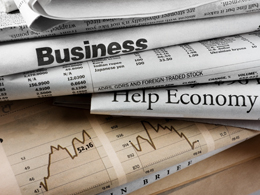 Last week brought a slew of disappointing economic data releases that, together, suggest the U.S. recovery may be slowing. On the bright side, international concerns died down somewhat.
Last week brought a slew of disappointing economic data releases that, together, suggest the U.S. recovery may be slowing. On the bright side, international concerns died down somewhat.
U.S. Economic News
The first lackluster report was a significant slide in the Small Business Optimism Index from the National Federation of Independent Business, which dropped from 98.3 to 94.1, with declines in nine of ten areas. This is a worrying sign for both employment growth and business investment in the second half of the year. Although the index remains at reasonably healthy levels, the sharp decline is the fourth largest on record, with two of the three others occurring during recessions, according to Ned Davis Research.
Meanwhile, total retail sales dropped 0.3 percent in June from the prior month, which was also revised down from 1.2 percent to 1 percent. After a very strong May, a slowdown was expected, but an actual decline was not. Retail sales excluding autos and gasoline were also hit hard, with a decline of 0.2 percent, down from a 0.5-percent gain the previous month. Again, a slowdown was expected but a decline wasn’t, with the low end of expectations calling for a gain of 0.2 percent.
Unfortunately, this weak report wasn’t an exception. For the core consumer spending group—the “control” group, which excludes autos, gas, and building materials—this was the second decline in the past three months (and the fifth in the past seven).
Consumer confidence also ticked down, with the University of Michigan Consumer Sentiment survey dropping from 96.1 to 93.3. Although still at healthy levels, the decline is consistent with the weak retail sales results.
Business activity was slightly more encouraging but still showed signs of weakness:
- Industrial production was up by 0.3 percent in June but remained down for the quarter.
- One positive development was a recovery in the mining sector, which includes oil drilling. This, along with other stats, suggests the energy industry is now stabilizing.
- Business surveys in New York and Philadelphia both remained in positive territory, although the Philly survey declined from 15.2 to 5.7.
- Capacity utilization crept up from 78.2 percent to 78.4 percent, showing that slow growth continues, despite areas of weakness.
Housing was the bright spot in last week's otherwise dreary economic news:
- Housing starts improved further in June, up by 9.8 percent from the previous month to 1,174,000, beating expectations; prior months were also revised upward.
- The 3-month average is now at the highest level since December 2007, and the 12-month average is at the highest point since 2008, showing a strong long-term upward trend.
- Building permits also jumped by 7.4 percent to 1,343,000, the highest level since July 2007, against an expected decline.
- Given the level of starts, homebuilder confidence rose as well, with the NAHB Housing Market Index hitting the highest mark since November 2005.
Despite generally weak economic reports, the Fed appears on track to raise rates this year. In her testimony to Congress last week, Janet Yellen indicated that a rate increase was likely in 2015, data permitting, although she offered no specifics as to the timing. She was generally upbeat about continued economic improvement but, perhaps surprisingly, made little mention of international concerns.
International News
In any event, there was better news from abroad last week:
- Greece and its creditors came to a preliminary agreement to restart bailout negotiations, and both the Greek and German parliaments passed the required measures.
- China’s stock market slide stopped and partially reversed in the face of government actions.
- Although passage by Congress remains uncertain, a nuclear deal with Iran was finally struck, which could potentially add to oil supplies and drive prices down even further.
The Week Ahead
Little economic news is slated for release this week. Reports on existing home sales (Wednesday) and new home sales (Friday) should give us a better picture of the demand for housing as compared with supply. Analysts expect increases over the previous month in the range of 0.5 percent to 1 percent, closer to long-run averages despite upward moves in mortgage rates.


 Print
Print


